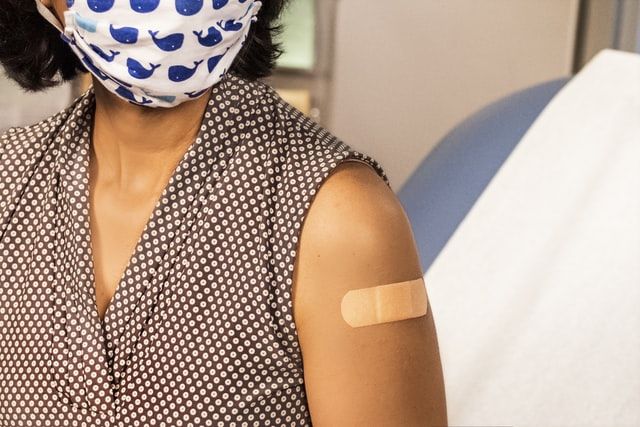
Updated 2022 Adult Immunization Schedule Released
For protection from infectious and harmful diseases, preventive vaccines are among the easiest and most cost-effective tools we have. While public health experts and medical providers have told us about the importance of COVID-19 vaccination, don’t overlook other immunizations that keep you free from infections that rob you of good health.
Importance of Vaccines for Adults
Vaccines can prevent death and debilitating illness. They also provide widespread protection in the form of herd immunity, and they reduce healthcare costs and other medical burdens on society.
Vaccines are especially helpful in safeguarding the health of older adults. With age, most people are increasingly susceptible to infection. Older adults are also at higher risk for chronic conditions like heart disease, diabetes, obesity, and stroke. Getting vaccinated can promote one’s health and, in turn, reduce the health impacts of these and other conditions.
2022 Adult Immunization Schedule
Regardless of age, all adults should seek certain vaccines, such as the one for COVID-19. COVID-19 vaccination reduces the spread of the coronavirus. Vaccination reduces the risk of hospitalization, severe illness, and death for individuals who develop COVID-19. Vaccinated individuals should also get a booster shot to maintain their protection.
The Centers for Disease Control and Prevention (CDC) also recommends a yearly vaccine for influenza (seasonal flu) for all adults. This shot is essential for people with chronic conditions, older adults, and pregnant individuals.
Finally, all adults should get the Tdap vaccine for tetanus, diphtheria, and pertussis (whooping cough) if they did not receive it in adolescence. They also need a Tdap booster every 10 years. Pregnant individuals should receive the Tdap at 27–36 weeks.
The following schedule from the CDC provides additional recommended immunizations by age group:
Ages 19–26
|
Measles, mumps, rubella (MMR) |
1 or 2 doses according to doctor recommendation |
|
Varicella (chickenpox, VAR) |
2 doses |
|
Human Papillomavirus (HPV) |
2-3 doses, depending on age at first vaccination |
|
*Pneumococcal conjugate (PCV13) |
1 dose for patients with at least one risk factor |
|
*Pneumococcal polysaccharide (PPSV23) |
1-2 doses for patients with at least one risk factor depending on indication |
|
Hepatitis A (HepA) |
2-3 doses based on vaccine type and risk factors |
|
Hepatitis B (HepB) |
2-3 doses based on vaccine type and risk factors |
|
Meningococcal A, C, W, Y (MenACWY) |
1-2 doses based on indication |
|
Meningococcal B (MenB) |
2-3 doses based on vaccine and indication For ages 19-23, depending on doctor recommendation |
*Reflects recent changes in CDC recommendations.
Ages 27–49
|
Measles, mumps, rubella (MMR) |
1 or 2 doses according to doctor recommendation |
|
Varicella (chickenpox, VAR) |
2 doses |
|
Human Papillomavirus (HPV) |
Patients 27-45 years old based on doctor recommendation |
|
*Pneumococcal conjugate (PCV13) |
1 dose for patients with at least one risk factor |
|
*Pneumococcal polysaccharide (PPSV23) |
1-2 doses for patients with at least one risk factor depending on indication |
|
Hepatitis A (HepA) |
2-3 doses based on vaccine type and risk factors |
|
Hepatitis B (HepB) |
2-3 doses based on vaccine type and risk factors |
|
Meningococcal A, C, W, Y (MenACWY) |
1-2 doses based on indication |
|
Meningococcal B (MenB) |
2-3 doses based on vaccine and indication |
*Reflects recent changes in CDC recommendations.
Ages 50–64
|
Measles, mumps, rubella (MMR) |
1 or 2 doses according to doctor recommendation |
|
Varicella (chickenpox, VAR) |
2 doses for patients with risk factors |
|
Zoster recombinant (Shingles, RZV) |
2 doses |
|
*Pneumococcal conjugate (PCV13) |
1 dose for patients with at least one risk factor |
|
*Pneumococcal polysaccharide (PPSV23) |
1-2 doses for patients with at least one risk factor depending on indication |
|
Hepatitis A (HepA) |
2-3 doses based on vaccine type and risk factors |
|
Hepatitis B (HepB) |
2-3 doses based on vaccine type and risk factors |
|
Meningococcal A, C, W, Y (MenACWY) |
1-2 doses based on indication |
|
Meningococcal B (MenB) |
2-3 doses based on vaccine and indication |
*Reflects recent changes in CDC recommendations.
Ages 65 and Older
|
Varicella (chickenpox, VAR) |
2 doses for patients with risk factors |
|
Zoster recombinant (Shingles, RZV) |
2 doses |
|
*Pneumococcal conjugate (PCV13) |
1 dose for patients with at least one risk factor or doctor recommendation |
|
*Pneumococcal polysaccharide (PPSV23) |
1 dose |
|
Hepatitis A (HepA) |
2-3 doses based on vaccine type and risk factors |
|
Hepatitis B (HepB) |
2-3 doses based on vaccine type and risk factors |
|
Meningococcal A, C, W, Y (MenACWY) |
1-2 doses based on indication |
|
Meningococcal B (MenB) |
2-3 doses based on vaccine and indication |
*Reflects recent changes in CDC recommendations.
Additional Vaccine Considerations
The CDC makes additional immunization recommendations for individuals with certain chronic conditions, including HIV infection, heart disease, and diabetes. Also, people employed in healthcare, men who have sex with other men, and pregnant individuals should consult the CDC’s immunization schedule to learn about additional vaccination recommendations.
Research and materials for this article were compiled, written, and distributed on behalf of the National Public Health Information Coalition. The views and opinions expressed in this blog are those of the various authors and do not necessarily reflect the official policy or position of the National Public Health Information Coalition or its members.
References
https://www.hhs.gov/immunization/who-and-when/adults/seniors/index.html
https://www.drugtopics.com/view/review-vaccine-guidelines-for-older-adults
https://www.cdc.gov/vaccines/adults/rec-vac/index.html
https://www.cdc.gov/vaccines/schedules/downloads/adult/adult-combined-schedule.pdf
https://nphic.org/news/news-highlights/651-cdc-combined-schedule.pdf

